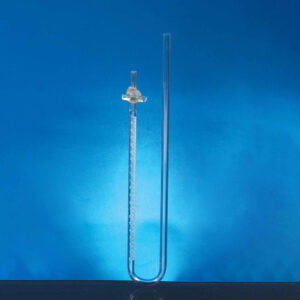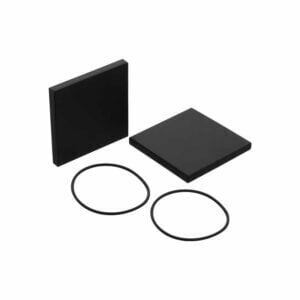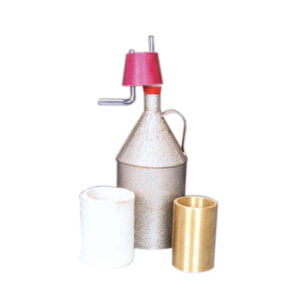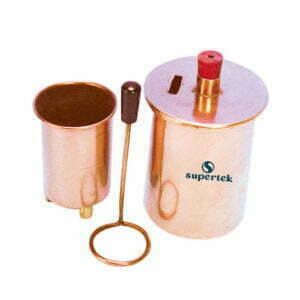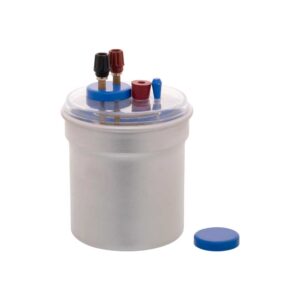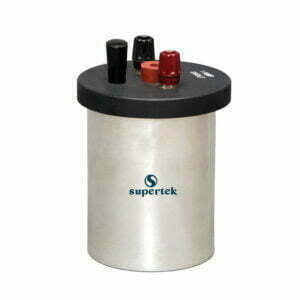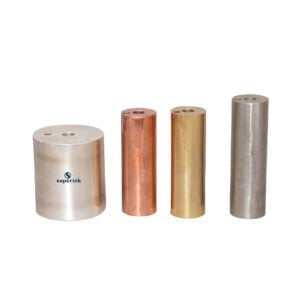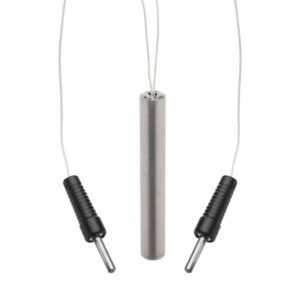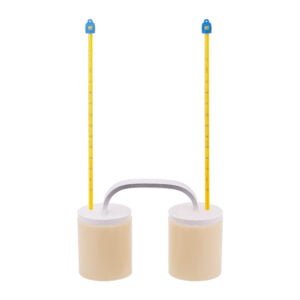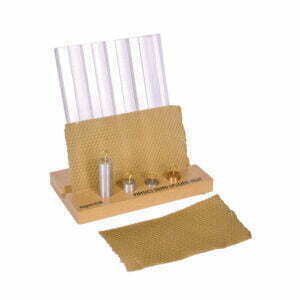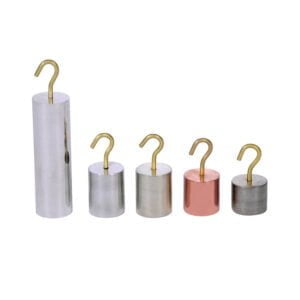-
-
Heat
Absolute Expansion of Mercury Apparatus, Dulong & Petit
To determine the co-efficient of absolute expansion of mercury. Glass tubes with vertical limbs contained within glass jackets approx. 460 x 25 mm height x diameter, are closed by bungs and fitted with inlet and outlet tubes. Upper ends of these vertical limbs are angled on emergence from the jackets to produce two short, adjacent limbs placed against a silvered glass scale 0 to 12 cm x 1 mm. Mounted on stand 610 x 230 mm, height x width. Overall height 750 mm approx., supplied without mercury.
PH20084 -
Heat
Charle’s Law Apparatus
To determine the coefficient of expansion of a gas at constant pressure. A glass U-tube with a bulb and stopcock at one end, the other limb being open. An outlet tube from the bottom of the U tube passes through a rubber bung and has a stopcock at the end. The stem below the bulb is graduated 3 x 0.1 ml. An inlet tube with a mohr clip also passes through the bung. A glass water jacket encloses the U tube. All glass parts made of borosilicate glass require only 20 ml mercury, which is not included.
PH20089 -
Heat
Charle’s Law Kit
A glass U-tube of 10 mm diameter the shorter limb of which has a stopcock near top and the longer limb can take a plastic tube. A scale is provided and can be attached to the shorter limb. With red indicator oil but without 2000 ml tall form beaker which acts as a reservoir.
PH20093 -
Heat
Ice Melting Kit
Demonstrates the difference in thermal conductivity of two different materials. The kit consists of two identical blocks, one made of aluminum and other made of plastic. When an ice cube is placed on aluminum it turns into water in seconds, while on plastic block, it melts slowly. The aluminum block has a larger heat capacity and a higher thermal conductivity, while the plastic block has lower values of both parameters. With instructions.
PH20095 -
-
-
-
Heat
Specific Heat Demonstration Set
Unique way to illustrate the different heat capacities of various metals features a slanted panel with four grooves to hold four different metals. Place a sheet of bee’s wax in the front of the pane and submerge the metal samples in hot water. When the metals are placed on the grooves simultaneously they will melt and sink through to different levels based on their specific heat. Includes four metals cylinders: Aluminum, Copper, Lead and Tin; support stand, two pieces of beeswax and instructions.
PH20202






